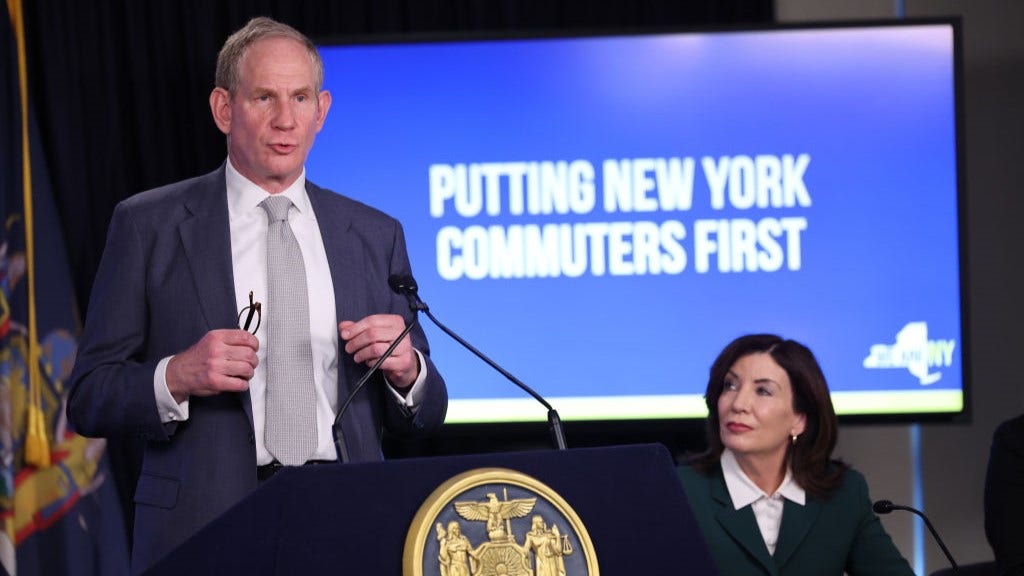The Labor Department is scheduled to release its jobs report for October on Friday, which will be the last major economic data release ahead of Election Day and the Federal Reserve’s policy meeting next week.
American voters and Fed policymakers will have the opportunity to analyze the state of play in the labor market and factor that into their respective decisions next week. Voters will determine whether control of government will be divided between, or unified under Democrats or Republicans – while central bank policymakers will determine whether to lower interest rates again and by how much.
The U.S. economy is projected to have added 115,000 jobs in October, according to an LSEG poll of economists. That would be a much slower pace of job growth than September, when 254,000 jobs were added well above the LSEG forecast of 140,000 jobs.
October’s jobs report will be influenced in part by several factors that could show slower job growth than anticipated – including the recent hurricanes that struck the Southeastern U.S. as well as labor disputes.
US ECONOMY GREW 2.8% IN THE THIRD QUARTER, SLOWER THAN EXPECTED
Nancy Vanden Houten, lead U.S. economist at Oxford Economics, explained that her firm expects the ongoing Boeing strike plus a smaller, recently resolved strike and auto sector layoffs will result in a net loss of jobs in the manufacturing sector for October – though those attributed to the strike may return in future reports.
“We expect the strike affecting 33,000 workers at Boeing and a strike of 5,000 workers at Textron, an aerospace parts maker in Kansas, to drive a decline in manufacturing jobs of 50,000,” she said in a report. Vanden Houten added that while the Textron strike ended a week ago, it was in effect during the Bureau of Labor Statistics’ reference period for the October jobs report.
JOB OPENINGS TUMBLE MORE THAN EXPECTED TO THE LOWEST SINCE JANUARY 2021

She also noted that layoffs at Stellantis impacted about 2,000 workers and that the ongoing Boeing strike has caused issues for the aerospace giant’s suppliers, causing them to furlough workers in other sectors. An additional strike by 3,400 hotel workers will detract from job creation in the leisure and hospitality industry.
Vanden Houten added that Hurricanes Helene and Milton are expected to subtract about 70,000 from net job growth across industries, but particularly in leisure and hospitality, business and professional services, and construction.
She noted that there is “considerable uncertainty in the impact of the hurricanes on employment” but that the firm’s analysis considered both the impact of hurricanes on comparable regions, and the size of employment in affected industries in the areas hardest hit by the hurricanes, such as Asheville, North Carolina.
MACHINISTS UNION REJECTS BOEING CONTRACT OFFER, EXTENDING STRIKE

Ellen Zentner, chief economic strategist for Morgan Stanley Wealth Management, offered a similar analysis of those impacts on the October jobs report and explained that it could result in a mixed outlook for the economy after the ADP jobs report was stronger than expected and U.S. third-quarter GDP was cooler than expected in Wednesday’s data releases.
“Hurricanes and strikes are expected to result in a softer jobs report this Friday, and so far this week, the data has been mixed – job openings fell and layoffs increased, while ADP private payrolls were the strongest in a year,” Zentner said. “GDP may have missed estimates slightly, but it still suggests the economy is still on solid ground. And with inflation continuing to trend lower, it isn’t overheating. Bottom line, the data supports the Fed’s rate-cutting plan.”
The market currently expects that the Fed will cut interest rates by 25 basis points next week after a larger than usual 50 basis point cut in September, which was the first rate cut in four years. As of Wednesday, traders have priced in a 94.6% probability of a 25 basis point cut, with just a 5.4% chance the Fed holds rates steady, according to the CME FedWatch tool.
Those expectations have undergone a notable shift over the past month – on Sept. 30, traders saw just a 65.3% probability of a 25 basis point cut and a 34.7% chance of a second 50 basis point cut, per CME FedWatch.













